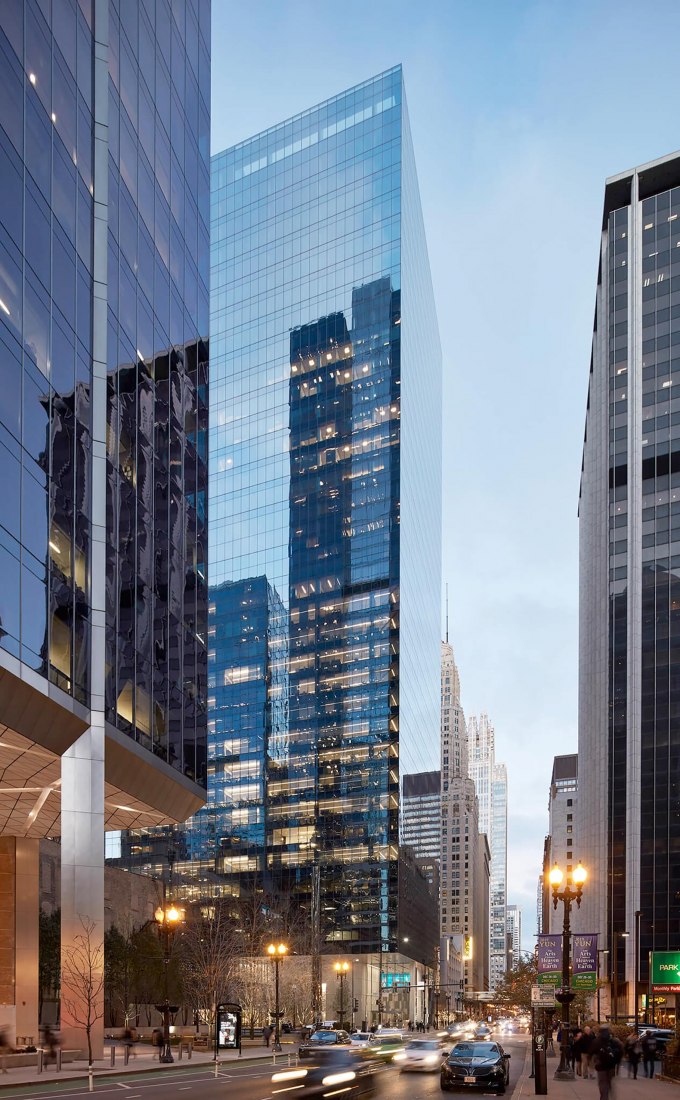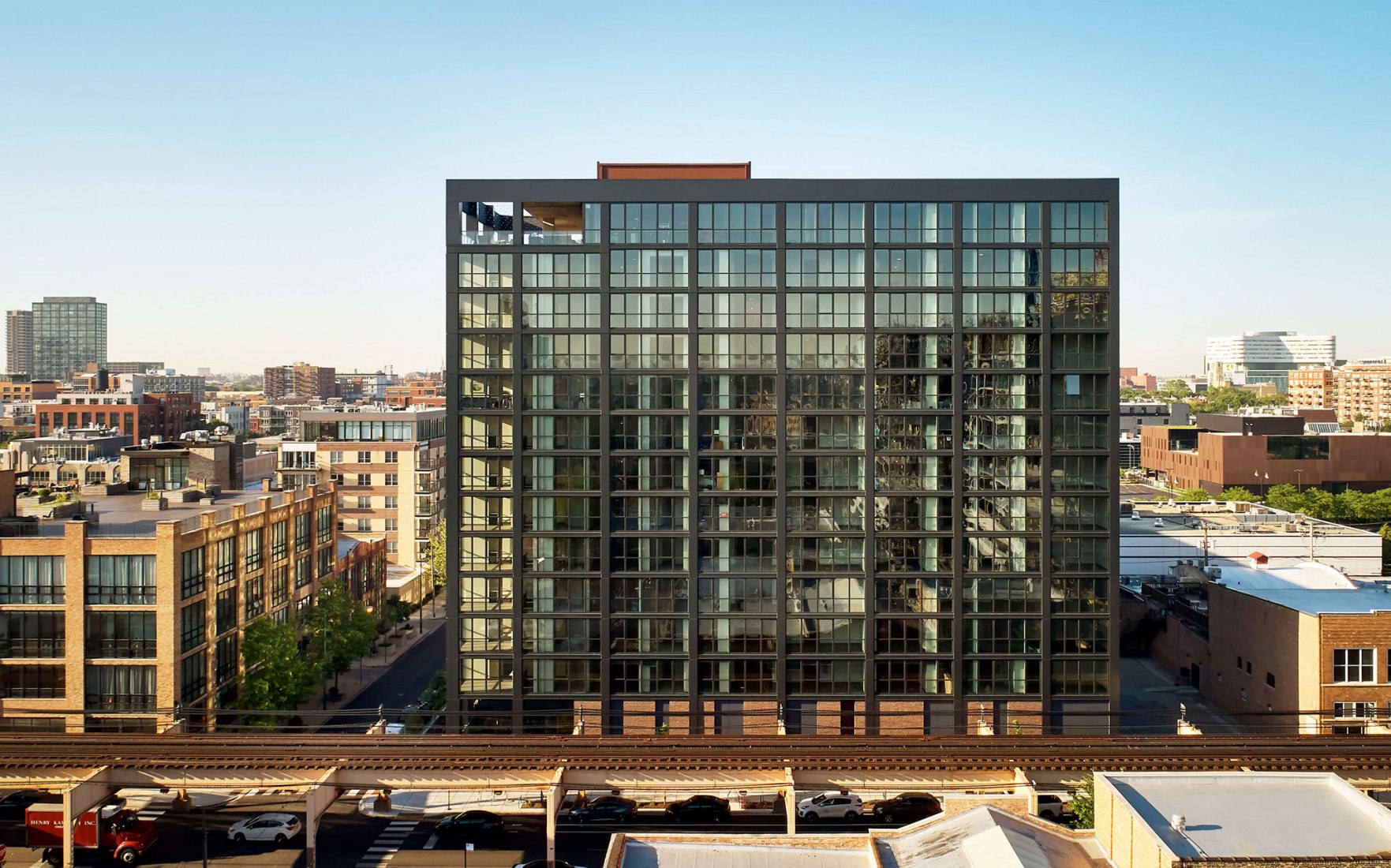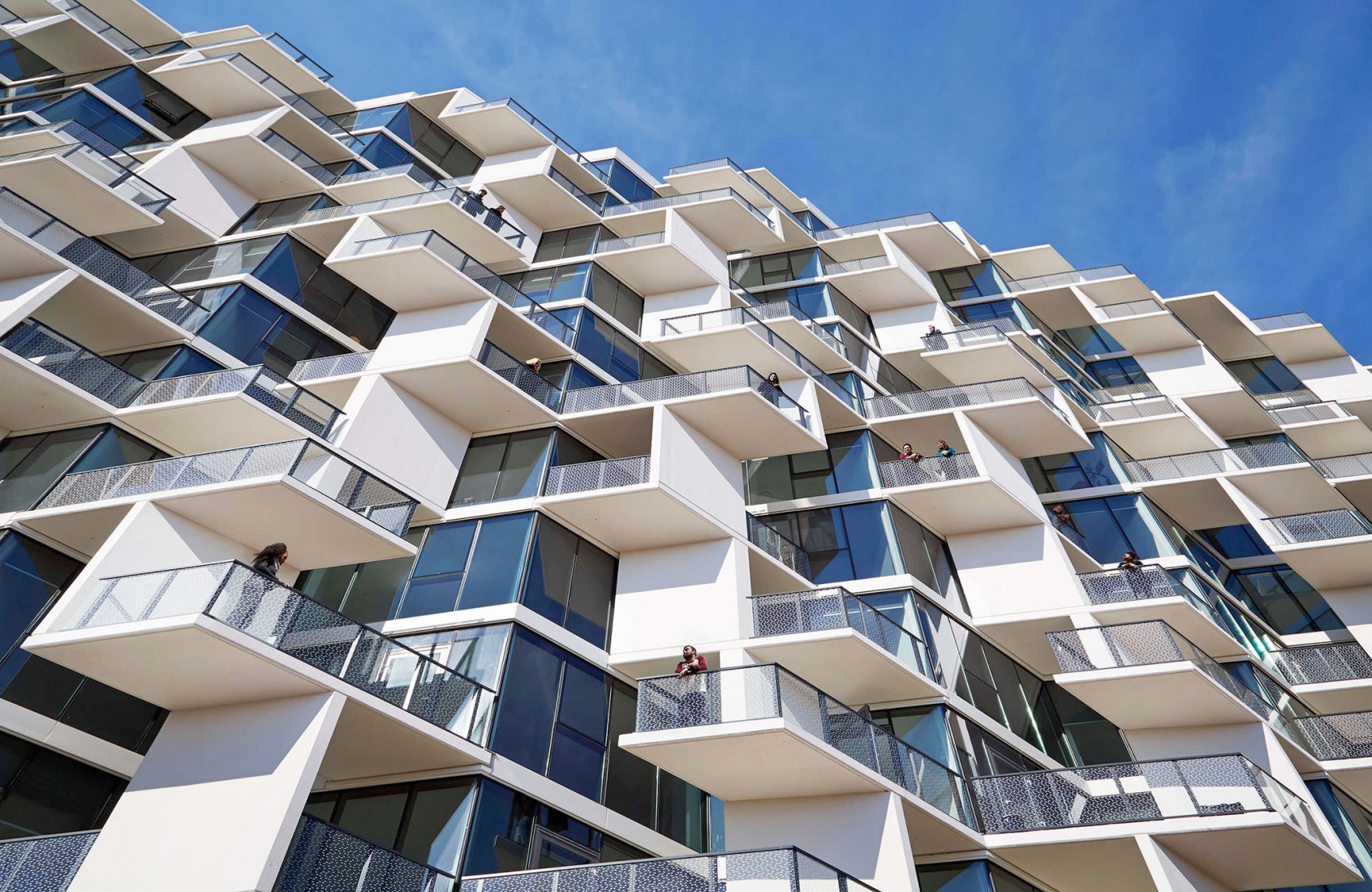The Foundation for Contemporary Architecture shows us its last addition to C-Guide as a global guide to contemporary architecture, adding more than a hundred new projects located in Chicago, which are now accessible free on the website www.c.guide and the app for mobile devices.
With this latest new addition, and since its launch in late 2019, C-Guide offers users the best in contemporary architecture from 7 major cities, namely London, Los Angeles, Barcelona, Paris, Sydney, Amsterdam and Chicago, which add up to more than 1,500 reference projects.
The modern architectural tradition, born in Chicago in the late 19th century and developed throughout the 20th century, is widely present in the city’s contemporary architectural culture. The many restoration and modern heritage preservation projects included in the guide are proof of this. Thanks to these projects we can enjoy some of the greatest architectural landmarks in history, such as Robie House, Frank Lloyd Wright’s Unity Temple and Mies Van der Rohe’s Lake Shore Drive flats.
Home to the first skyscrapers, Chicago continues to produce outstanding examples of high-rise architecture, updating the building design through new formal expressions and incorporating new applications beyond the traditional office. An example of this is the Aqua Tower by Studio Gang, whose wavy terrace façade generates, in the designers’ words, a “vertical community”, a very effective strategy during the long period of confinement and which has taught us that communities are innovative, resilient and proactive, offering creative solutions to complex problems, especially in times of crisis. According to UN-Habitat, “how cities manage to mobilise their various communities, in terms of different identity groups, location and economic status, to address challenges like COVID-19, climate and inequality, will contribute to their success”. That is why the slogan adopted for this year is “Valuing our communities and cities”.
In this regard, the university community plays a key role as a source of quality architectural production in our cities. In Chicago, Mies Van der Rohe designed the renowned Illinois Institute of Technology (IIT), setting a modern direction for the city’s campuses, and since then a number of architects have provided valuable inputs in this regard. Projects like OMA’s McCormick Tribune Campus Center or Street Village by Jahn student residence –both located on the IIT campus– or others in different parts of the city, such as the Richard J. Daley building by JGMA studio or the Booth School of Business by Rafael Viñoly Architects, talk about the city’s special interest in the quality of the spaces inhabited by its students.
In recent years, the city has also shown an interest in developing new linear public areas that open up spaces for citizens to enjoy and promote sustainable mobility. One of these examples is the renovation of the 606 railway infrastructure as a linear park and cycle path. However, by far the most important is the riverbank restoration project, designed by Sasaki Architects and Ross Barney Architects, which has managed to turn this natural route –which has been overlooked in the city– into one of the backbones of Chicago’s public life, offering opportunities for the creation of new architectural programmes related to new water leisure activities, such as the WMS pier in Clark Park, by Studio Gang, among others.
The cultural sphere is also a source of leading contemporary architectural projects in the city of Chicago, including the Modern Wing of the Chicago Art Institute, by Renzo Piano, and the Wrightwood 659 exhibition space, designed by the Japanese architect Tadao Ando.
With this latest new addition, and since its launch in late 2019, C-Guide offers users the best in contemporary architecture from 7 major cities, namely London, Los Angeles, Barcelona, Paris, Sydney, Amsterdam and Chicago, which add up to more than 1,500 reference projects.
The modern architectural tradition, born in Chicago in the late 19th century and developed throughout the 20th century, is widely present in the city’s contemporary architectural culture. The many restoration and modern heritage preservation projects included in the guide are proof of this. Thanks to these projects we can enjoy some of the greatest architectural landmarks in history, such as Robie House, Frank Lloyd Wright’s Unity Temple and Mies Van der Rohe’s Lake Shore Drive flats.
Home to the first skyscrapers, Chicago continues to produce outstanding examples of high-rise architecture, updating the building design through new formal expressions and incorporating new applications beyond the traditional office. An example of this is the Aqua Tower by Studio Gang, whose wavy terrace façade generates, in the designers’ words, a “vertical community”, a very effective strategy during the long period of confinement and which has taught us that communities are innovative, resilient and proactive, offering creative solutions to complex problems, especially in times of crisis. According to UN-Habitat, “how cities manage to mobilise their various communities, in terms of different identity groups, location and economic status, to address challenges like COVID-19, climate and inequality, will contribute to their success”. That is why the slogan adopted for this year is “Valuing our communities and cities”.
In this regard, the university community plays a key role as a source of quality architectural production in our cities. In Chicago, Mies Van der Rohe designed the renowned Illinois Institute of Technology (IIT), setting a modern direction for the city’s campuses, and since then a number of architects have provided valuable inputs in this regard. Projects like OMA’s McCormick Tribune Campus Center or Street Village by Jahn student residence –both located on the IIT campus– or others in different parts of the city, such as the Richard J. Daley building by JGMA studio or the Booth School of Business by Rafael Viñoly Architects, talk about the city’s special interest in the quality of the spaces inhabited by its students.
In recent years, the city has also shown an interest in developing new linear public areas that open up spaces for citizens to enjoy and promote sustainable mobility. One of these examples is the renovation of the 606 railway infrastructure as a linear park and cycle path. However, by far the most important is the riverbank restoration project, designed by Sasaki Architects and Ross Barney Architects, which has managed to turn this natural route –which has been overlooked in the city– into one of the backbones of Chicago’s public life, offering opportunities for the creation of new architectural programmes related to new water leisure activities, such as the WMS pier in Clark Park, by Studio Gang, among others.
The cultural sphere is also a source of leading contemporary architectural projects in the city of Chicago, including the Modern Wing of the Chicago Art Institute, by Renzo Piano, and the Wrightwood 659 exhibition space, designed by the Japanese architect Tadao Ando.



























